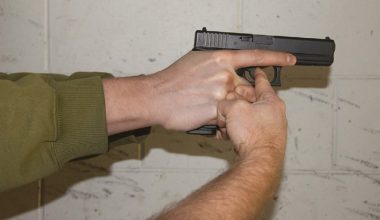I have been working as a Deadly Force Expert in the Federal and Superior Courts for over 25 years and have heard a lot of nonsense. Plus tons of articles exist about all things tactical. For example, there is the hyper- focused, ultra-combat, will-thebullet into the target BS technique. Then there’s the go-through-the-door Matrix, gravity-defying room-clearance technique (also BS).
In short, there’s a lot of hoo-malimali (sic) written about absolutely nothing. Ever hear the phrase “win the battle, lose the war”?
Tactics, shooting, gear and all things supposedly “high-speed” are somewhat interesting when multimillion dollar settlements are awarded when there was absolutely no reason for it.
Post officer-involved-shooting (OIS) event protocols are sometimes violated through ignorance, stupidity, or just plain lack of common sense. When the dust has settled, one needs to immediately recompose one’s self and take stock in the order of things. Here’s the big one: leave evidence in place!
If there is evidence and especially if the evidence (gun, knife, or bluntforce object) is what prompted you to apply deadly force in the first place, leave it in place. You’re not a Hollywood action movie star.
I am aware of cases where an object was moved post-OIS for no apparent reason. If there are no enraged crowds, no possibility of scene contamination, and no alien visitors (the extraterrestrial type), leave the evidence in place. When you move something at a crime scene, you open the door for the opposition to allude to conspiracy, collusion, or cover-up.
The public is subjected to a lot of negative press regarding police use of force. Bad and marginal shootings are broadcast at light speed 24 hours a day on every imaginable social media outlet. Some of the criticism leveled is justifiable and some is not.
Does the media influence the juries that decide the fate of the officer or department involved? You’d better believe it. Common sense can go out the window these days. A skilled attorney can place doubt relative to an officer’s intention when evidence has been moved or tampered with and justification for doing so is lacking.
As a hypothetical example: Officer “A” shoots a suspect drawing a gun from his waistband. The suspect collapses and it is readily apparent he is no longer a viable threat and is quite possibly expired. Our intrepid Officer “A” secures the gun in his back pocket or moves it to another location for “safekeeping.” (After all, that’s what movie stars do, right?)
The check on the gun reveals it is stolen. Attorney “B” postulates the theory that Officer “A” actually planted the gun on the deceased, is less than truthful, and there was never any threat posed at all.
In this example, one could argue that in order for this to have occurred, Officer “A” would have to have carried on his person, for every shift of every day and every minute he ever worked, a stolen gun (which no one on his department ever observed or was remotely aware of ) in the remote event (in a 20-year average career, in which less than 3% of officers are ever involved in an OIS) he would be involved in a shooting in which no opposing gun was ever to be found (other than the “throwaway”).
Sounds ludicrous, right? Guess what? Some people buy into the theory that officers carry “throwaways.” I would also acknowledge that yes, a long, long time ago, some officers were guilty of this, but things have changed—radically!
How about this scenario? An OIS occurs and someone in the ensuing moments moves a particular piece of evidence rather seminal to the event. Robbery Homicide questions multiple persons on–scene relative to the evidence movement. No one cops out. There’s the opening.
“Well, ladies and gentlemen of the jury, the evidence didn’t just move itself, now did it? Or was it ever in the suspect’s possession in the first place?”
(As an aside, latent prints don’t always reveal themselves, and DNA transfers are not always in evidence, so throw those theories out the window.)
If no logical rationale for moving any piece of evidence on site exists, don’t move it! If, on the other hand, you’re some Hollywood $60-milliona- picture action hero, go ahead and move it—you can afford the lawsuit. I don’t know why officers sometimes violate the most elemental of police procedures, but they do.
I have personally been involved in OISs and have been around others who were involved. We took stock of the situation, recomposed, and left everything in place.
This goes very well to evidence crime-scene integrity and the chain of continuity. So … use your latest and bestest (sic) hyperbolic, super-whazoo, ultra-galactic, black-hole-defying techniques to prevail. And then don’t move the evidence.
Leave it in place!



